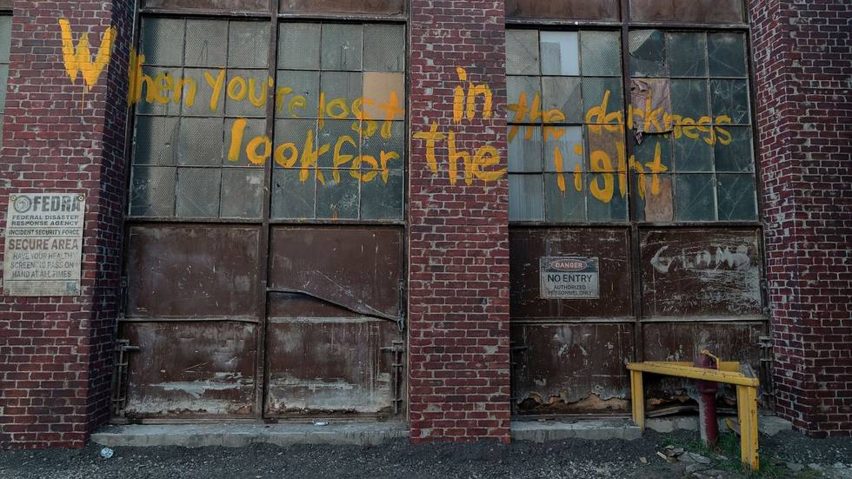
John Paino designs The Last of Us as a world where "civilisation is dead"
Production designer John Paino referenced tenement apartments, slums and Gazan camps when creating the set design for dystopian TV show The Last of Us, which also nods to the "fluorescent" colours of fungi.
On a video call from his Los Angeles office, Paino told Dezeen how he set the mood for the HBO show, which focuses on the journey of main characters Joel Miller (played by actor Pedro Pascal) and Ellie Williams (actor Bella Ramsey) across a zombie-infested United States.
The Last of Us sees them travel across the nation in 2023, 20 years after it has been ravaged by an infectious fungal outbreak – the cordyceps brain infection – that turned much of the population into zombie-like creatures.
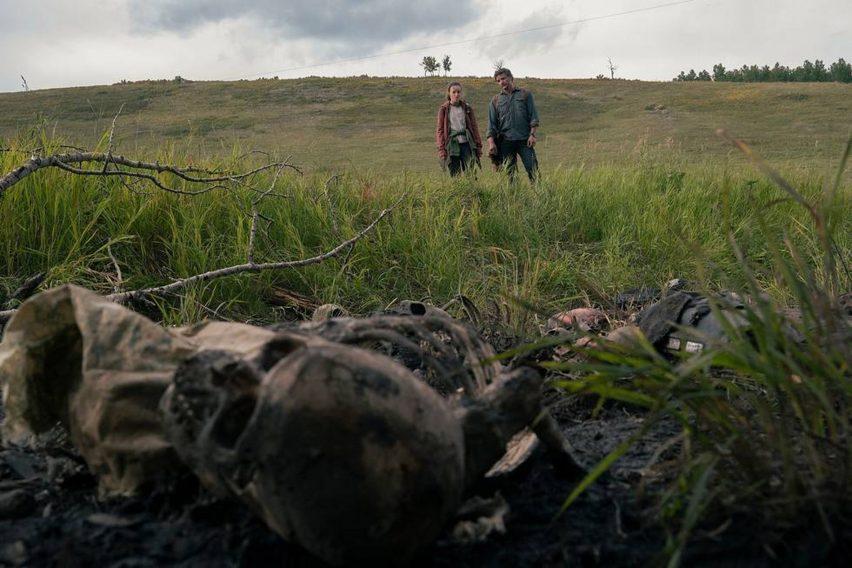
Though it is based on the 2013 video game by game developer Naughty Dog, the TV series has been lauded for its realism, much of which is down to its detailed production design.
Paino, who had played the game "a little bit", wanted the sets to look like they had been utilised and adapted by people in difficult circumstances.
"Because the game is about people, I looked at a lot of references for tenements, council housing, people in slums, people who were forced to live in camps in Gaza – how do people make do in these places?" he told Dezeen.
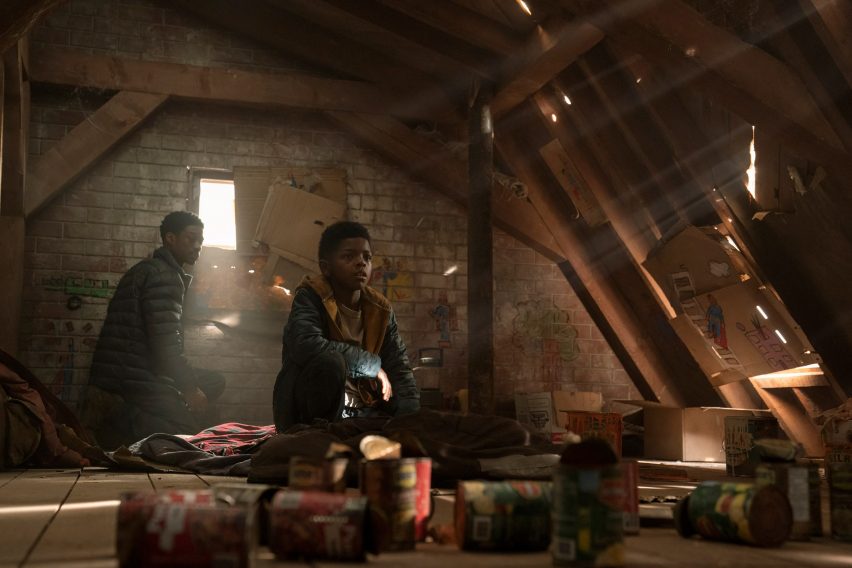
The designer, whose previous work includes shows The Leftovers, Big Little Lies and The Morning Show, also pointed out that most of what you see on The Last of Us physically exists, which adds to the realism.
"Our show is not walking through sets with walls and green screen," he said. "Everything where they're walking, whether it's a street, or [an interior] – 95 per cent of our interiors are built."
The team built more than 90 sets for the show, which was shot in Canada but is set in US cities including Boston and Kansas City.
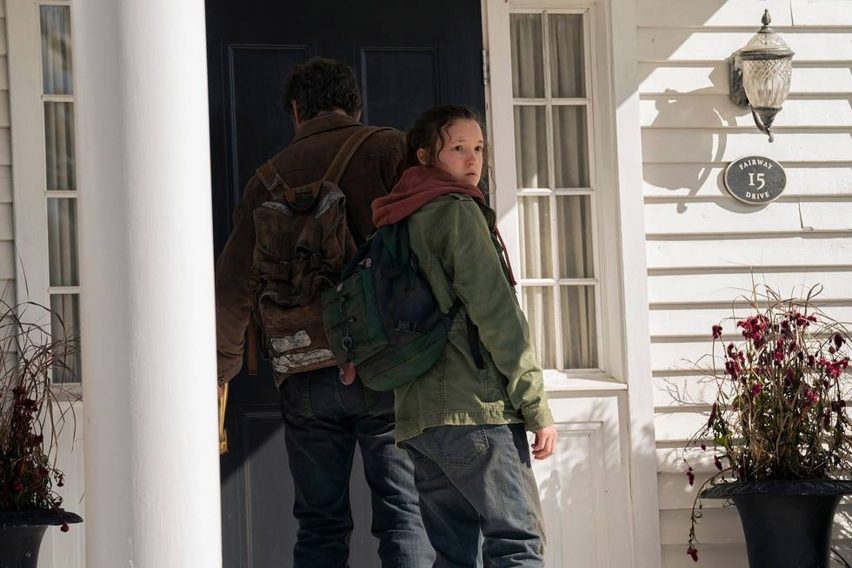
One of the biggest and most demanding sets can be seen in episode three, based in the town of Lincoln in northeast Massachusetts, where characters Bill (played by Nick Offerman) and Frank (played by Murray Bartlett) live. It measured three acres and had to be entirely built for the show.
"That kind of architecture, very much American colonial, did not exist at all in Canada; we really looked for it," Paino said.
But the team "lucked out," he added. "We were able to find an old suburban housing cul de sac, an area where at one point they had built houses and then ripped them down because it was a flood zone. So there were streets and there were some sidewalks."
"We basically built all those houses – the church, the VFW, the Civil War monument, all the signage," he added.
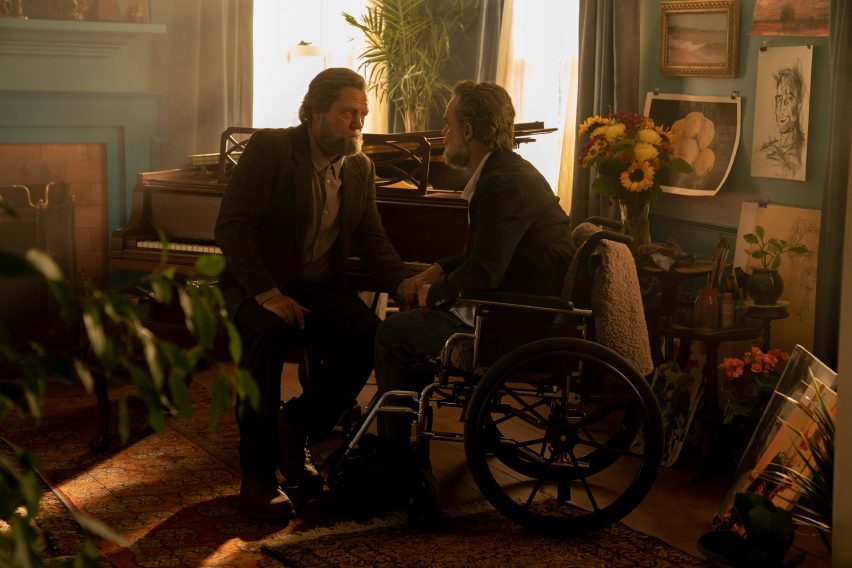
The Lincoln set was one of Paino's own favourites.
"Growing up in New York I've seen those places, and it was a nice counterpoint to the rest of the show, too," he said. "Because Bill would keep it clean and fresh, he would whitewash it, and if you've ever been to those kinds of towns they are kept that way – almost like museums."
In contrast, many other buildings in the show were made to look very run down, with Paino's explaining that his design sought to answer questions such as: "What happens if electricity stops for 20 years?"
"What happens in natural disasters when the weather takes over, when plants take over? There would be a ton of flooding," he said.
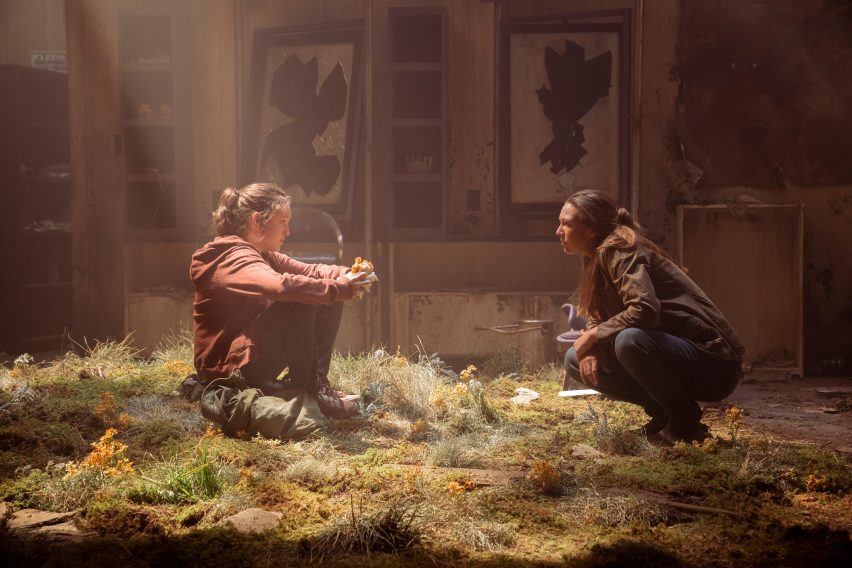
His team, "a very talented crew of painters and builders", repeatedly made the sets look more dilapidated.
"We were constantly going back in, especially to the house where Joel has a sniper position [in episode 5] with crowbars and going like 'that balustrade, push it over more' – we had to make it look like the house had been flooded for 20 years, wetting the wallpaper and so on," Paino said.
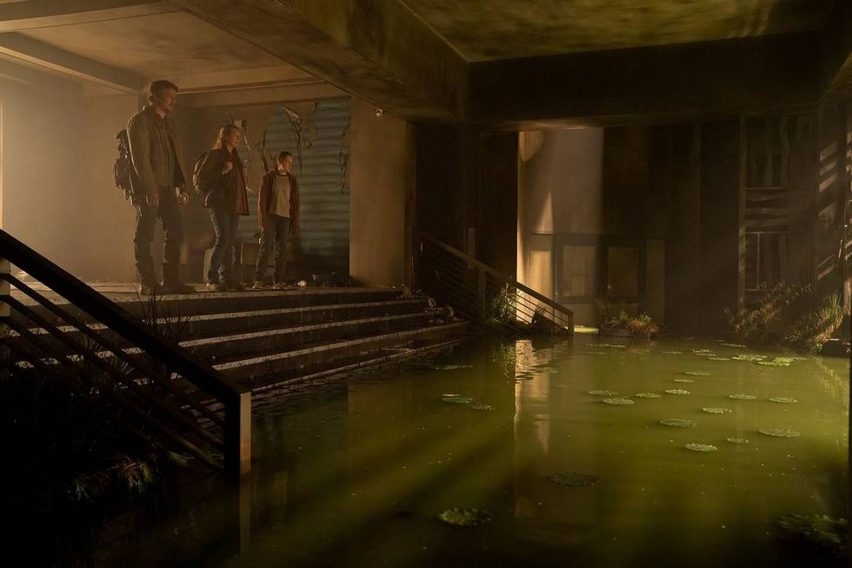
The colour palette of the series is remarkably similar to that of the game, with urban settings heavy on grey and brown tones, though Paino also aimed for the scenes set outside of the rundown cities to have an impact.
"It's all about how Ellie sees things, after never being outside," he said. "So we wanted to make things a bit greener and maybe a bit more vivid. Nature has taken over and there's a beauty in that."
"I didn't want everything to feel like it had been dipped in mud – there's decay and there's dirt, but we always wanted to have a little bit of colour coming through," he added.
"It also harkens to the colour in the infected, in the fungus."
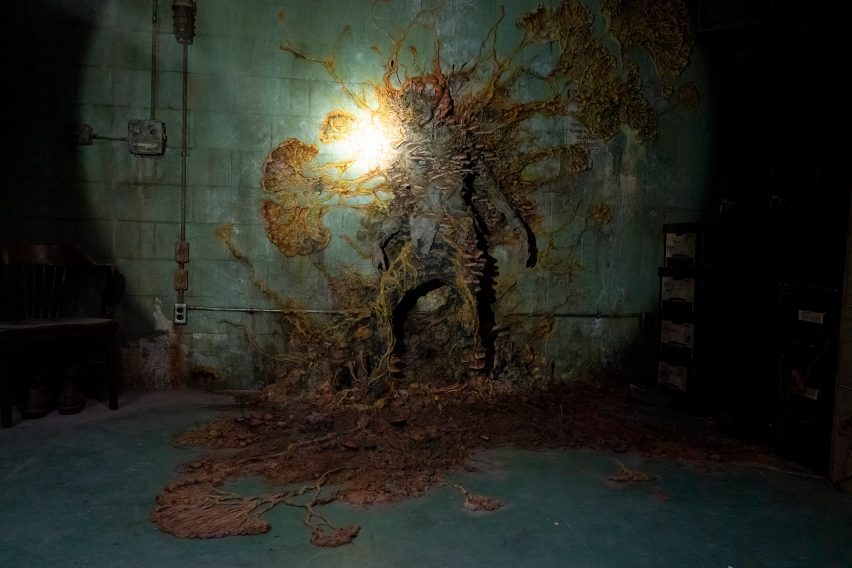
The bodies of the infected even created the background of some of the scenes, functioning as a "leathery wallpaper".
"What could be a mushroom, what could be a fungus and what's just a regular plant – that was something very creepy," Paino added. "We like that."
The colour of the deadly fungi also helped inform the feel of the show, Paino said, with the infected themselves providing some rare flashes of bright hues.
"I've been hiking through Seattle, and it was the first time I ever saw a phosphorescent mushroom," he said.
"It was startling, so bright it was fluorescent. And there's something about that metaphor – when everything else is dead, when civilization is dead, these things have this colour."
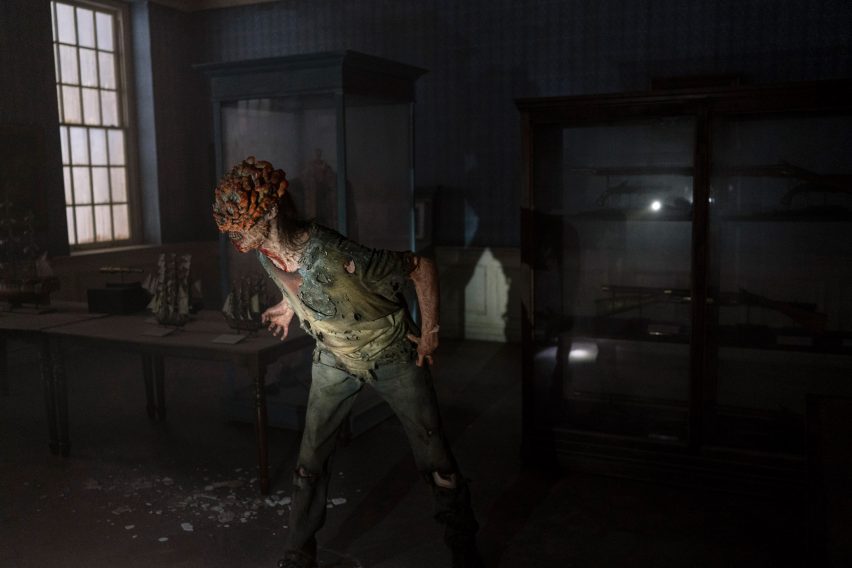
He also made sure to include plenty of artificial colour in the first episode, which is partly set on the day of the outbreak of the infection.
"In the first episode, when we were in Austin, the suburbs of Boston and that small town in Texas where all hell breaks loose, we wanted to make sure we saw neon colours," he added.
"Because once the electricity goes, those colours are not going to exist in our world."
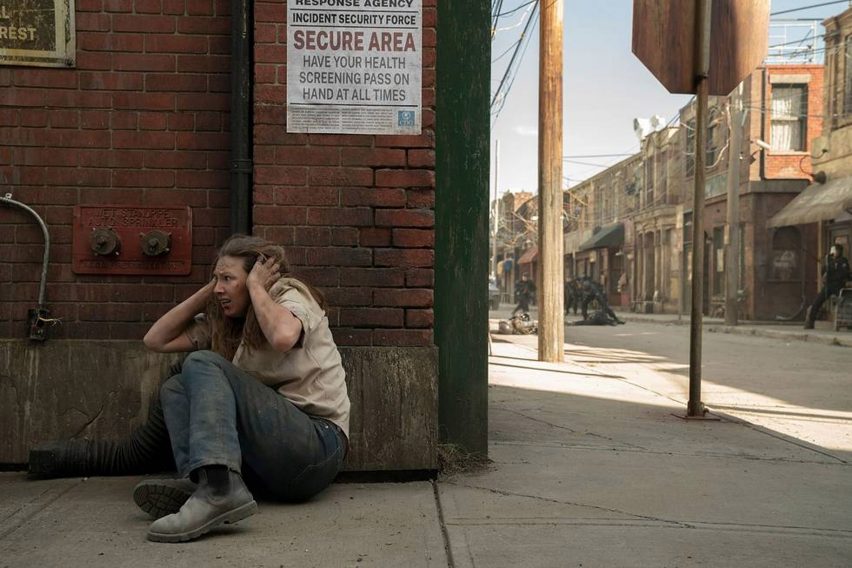
Paino also used the star-spangled banner to show the breakdown of society, with tattered American flags decorating the quarantine zones run by the fictional Federal Disaster Response Agency (FEDRA), while more successful communities like Bill and Frank's have pristine flags.
"We love our flags," he said. "Also, FEDRA's barely hanging on, so it's all about pomp and circumstance and putting on a good show."
"This is the last symbol and it's, fake, hollow, putting this big flag on a rotting wall that has to keep infected out. The idea of a fort and a flag is also a very American thing; it harkens back to Westerns."
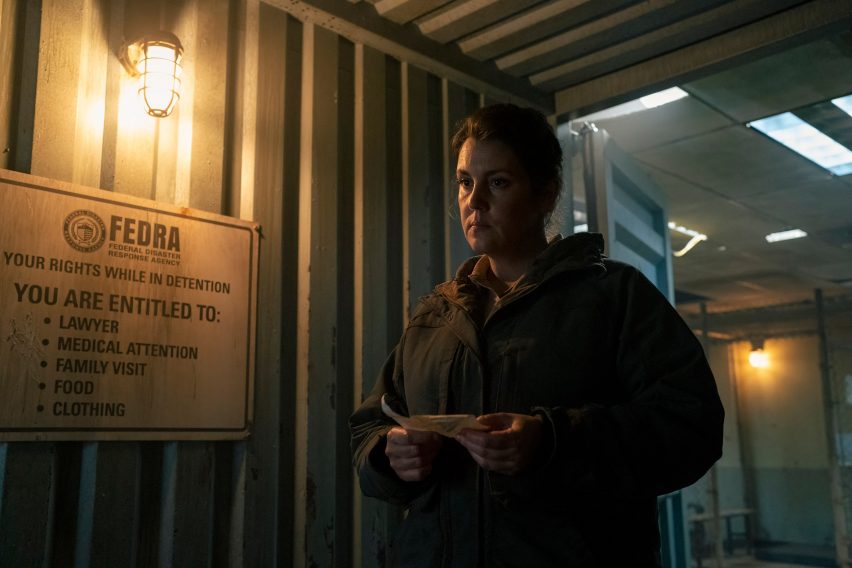
The designer also drew on real-world events and settings for many of the show's designs.
"I think my favourite part of the show was having this rich material and the showrunners, Craig [Mazin] and Neil [Druckmann], being open to doing different things," he said.
"I showed them things like 'here's how immigrants in America were caged so horribly'; we would try to find real-world examples, and they were really good about considering things like that."
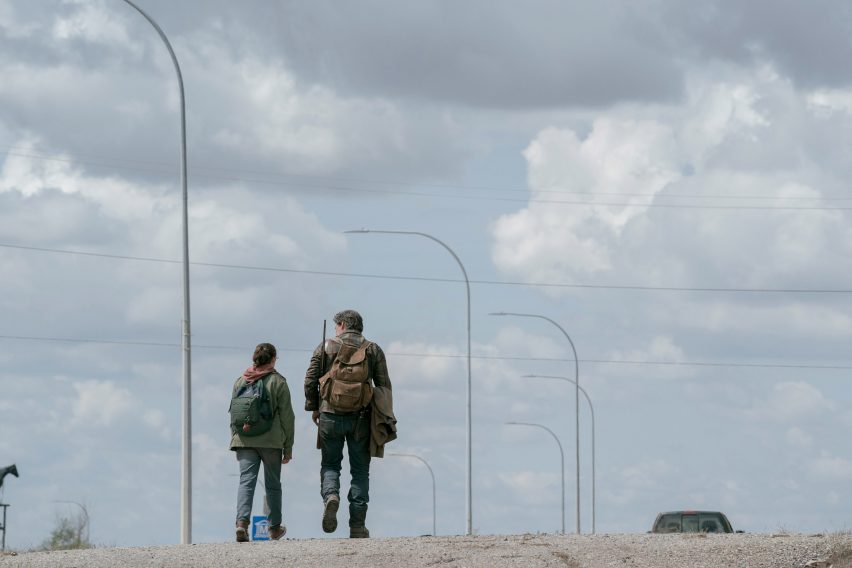
According to Paino, being able to expand on the world of the video game was another joy of the show, which is the biggest he has done to date.
"The game is beautiful, cinematic, it has everything going for it, but we're thinking of a world too, a bigger world and a world that we actually have to make," he said.
"That was one of the nice things about working on the show, that we can expand upon that," Paino added.
"We want to appeal to all the people who made the game – it's tricky; you don't want it to be so different, but you also don't want it to be a Xerox copy. And I think we did a good job of bridging the two."
Other recent shows with remarkable set design include House of the Dragon, which featured a large dragon skull, and the modernist Don't Worry Darling set that was strewn with vintage "treasures".
The photography is by Liane Hentscher, courtesy of HBO.